How and how to feed bell peppers?
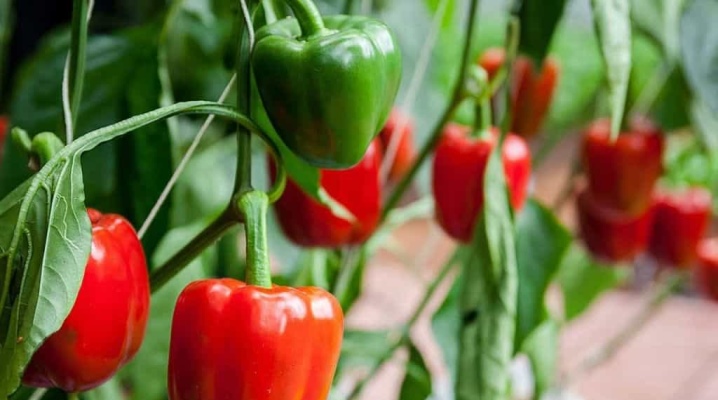
Bell pepper is a rather capricious crop that requires special growing conditions. When cultivating such a plant, it is extremely important to observe the feeding regime and do it correctly. Fertilizer options will be useful for those who plan to grow peppers in their summer cottage.
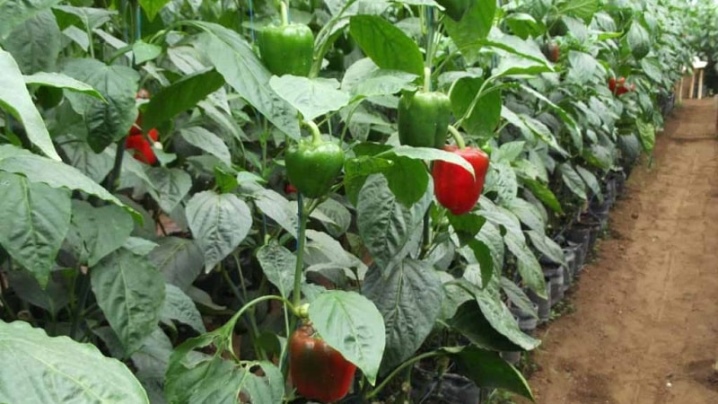
How to determine what a pepper needs?
Peppers take all the nutrients from the soil, and if one is missing, it will immediately affect the appearance of the culture.
Let's get acquainted with the most obvious signs of a lack of useful elements in sweet bell peppers.
- Nitrogen... With a lack of nitrogen, the culture slowly gains green mass, grows sluggishly and poorly. The leaves turn yellow, there are few ovaries. The solution is mullein feeding. You also need to stop giving calcium.
- Calcium... Foliage curling, as well as the appearance of gray-yellow dots on it, is a clear sign of a lack of calcium. In this case, you must immediately stop the supply of nitrogen and potash fertilizers. Calcium and nitrogen are constantly "competing" with each other, so they cannot be used together.
- Phosphorus... If the leaves have acquired a strange reddish or purple hue, this may indicate a phosphorus deficiency. You can get rid of the problem by fertilizing the peppers with superphosphate.
In addition to these elements, bell peppers definitely need potassium. It allows the fruit to be juicier and tastier.
Iodine, copper, manganese and some other elements accelerate the growth of the culture and increase the general immunity.
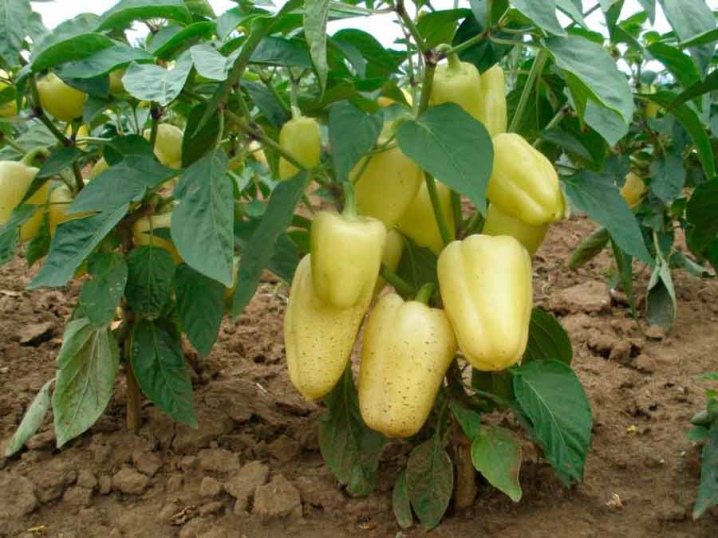
What can you feed?
There are many different products to choose from to feed the peppers. These will be both folk methods and ready-made complex products that can be bought in gardening stores.
Folk remedies
Such fertilizers are good because there is no chemistry in them. They pose no danger to plants, people, or beneficial insects that fly to the site.
Here are some top dressing recipes you can apply to peppers.
- Mullein... This fertilizer stimulates well the growth of green mass. However, it must be diluted before use, since a clean mullein can cause severe burns and crop death. Top dressing is diluted with water in a ratio of 1: 10.
- Chicken droppings... This fertilizer is a good alternative to mullein. Many gardeners find it even more potent. The concentration is as follows: 1 part of droppings and 20 parts of water. Such a mixture should be infused for 24 hours.
- Wood ash... The ash left over from the burnt tree will also serve as an excellent fertilizer for the peppers. With its help, it will be possible to reduce acidity in the soil, saturate it with phosphorus and potassium. It is used both dry and as an infusion. The latter is obtained by dissolving a full glass of ash in a 10 liter bucket of hot liquid.
- Banana peel... This product contains a lot of potassium and can easily compensate for the lack of such an element. The infusion for watering peppers is done as follows: 3 peels are poured into 3 liters of warm water, and then left for 72 hours to infuse.
- Eggshell... Chicken egg shells contain quite a lot of calcium. To prepare the solution, you will need shells from 3 eggs (raw), as well as 1.5 liters of hot liquid. The mixture is infused for 3 days.
- Bread... Such feeding allows you to increase the immunity of plants. To make it, you need to pour a kilogram of rye bread with a bucket of water, and then stand for 5 hours. At the end, the liquid is filtered.
- Milk and iodine... These two ingredients, interacting with each other, accelerate the growth of peppers, make the harvest richer and more delicious. The solution consists of the following components: 9 parts of water, 1 part of milk (can be replaced with whey) and 10 ml of iodine.
- Nettles and other herbs... Weeds and flowers disinfect the soil well and prevent the appearance of pests. For cooking, you need a barrel or other large container. It is filled with chopped herbs by 2/3, the rest is poured with cool water. Then the container is placed in the sun to start the fermentation process, while the lid must be closed. Stir from time to time. After the infusion is ready, it can be used, but the selected amount is pre-diluted in water in a 1: 1 ratio.
- Yeast... Yeast is a product full of all sorts of different elements. They contain a large amount of nitrogen, as well as a lot of phosphorus, vitamins, and other useful components. To prepare the solution, you need to take 200 g of fresh yeast and dissolve them in a liter of heated water. The resulting mixture is settled for a day, then it is diluted with water in a ratio of 1: 5.
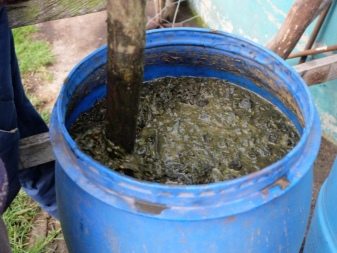
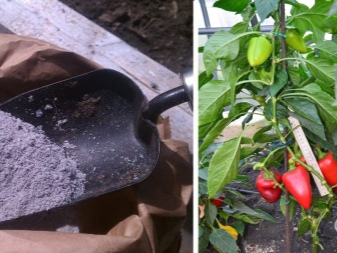
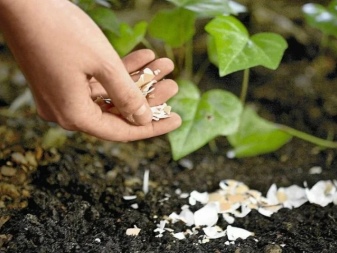
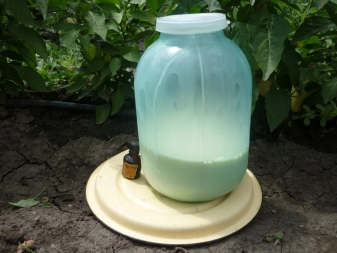
Finished fertilizers
Pepper is also very fond of ready-made mineral complexes. They must be entered in accordance with the instructions offered by the manufacturer.
Consider several options for ready-made fertilizers for bell peppers.
- Urea... This top dressing has a very high nitrogen content. Urea is used both for spraying and dry. In addition to it, calcium nitrate can serve as a good source of nitrogen.
- Peat oxidate... An excellent fertilizer for peppers, as it greatly stimulates their growth. Thanks to such feeding, the amount of the harvest increases, the fruits are more crispy and beautiful. Fertilizer is used for irrigation, as a rule, a 1% solution is sufficient.
- Potassium sulphate... This dressing makes the fruits more tasty, as it increases the amount of sugar and useful elements in them. It can be used together with other fertilizers.
- Superphosphate... Such a phosphorus fertilizer improves the growth of bell pepper, forms a strong immunity in it. Top dressing is used both in granules and in liquid form.
- Nitroammofoska... When used correctly, this dressing will give you the opportunity to get a rich harvest of vegetables. A 10-liter bucket will require 40 feed granules. If the dose is increased, the plants will begin to accumulate nitrates, which are dangerous to health.
- succinic acid... This substance in itself does not serve as a special feeding, but it allows other fertilizers to be absorbed much better. It can be used for both watering and spraying.
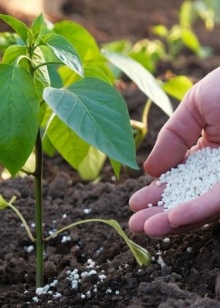
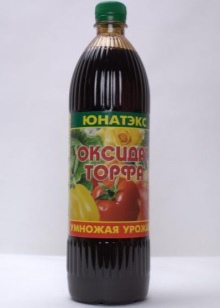
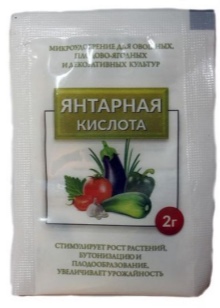
In addition to the feedings already mentioned, the following balanced products can be purchased from horticultural departments.
- "Orton Micro-Fe"... This complex contains everything you need for the proper growth and development of bell peppers.
- "GUMI"... Such a top dressing has in its composition almost everything that a pepper may require. It is especially effective if the weather is constantly unfavorable for the growth of culture on the street.
- "Ideal"... This complex heals plants and serves as an excellent prevention of pests.
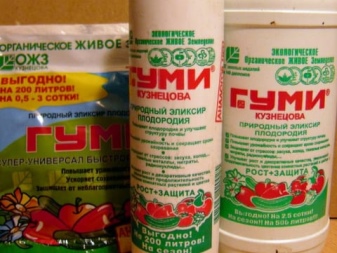
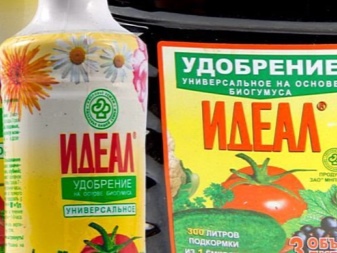
Rules and timing of feeding
Bell peppers will require several dressings for the entire period of their growth, and these dressings should be applied according to a certain scheme. They begin with the preparation of the soil. The earth must be saturated with useful elements so that the pepper immediately begins to absorb them. Fertilize the soil in autumn or spring... If it is autumn, you will have to feed the land 2 times: immediately before and after winter. For 1 m² of the garden you will need 10 kg of compost or humus.
You can also use this mixture: a glass of ash, a teaspoon of superphosphate and a tablespoon of potassium sulfate. Important: if the beds are fertilized twice, the organic matter and the mineral complex must be alternated. Having filled up the top dressing, the earth is covered with a film and left.
In a greenhouse, the soil will be ready in a couple of days, while the open ground will be saturated only after a week and a half.

During the seedling period
The first fertilizer is given to peppers even when they are in the seedling stage. During this period, young plants most of all need nitrogen, so fertilization is made on its basis. A liter of water is slightly warmed up on the stove, and then one gram of ammonium and potassium nitrate, as well as 3 g of superphosphate, are added there.
Such feeding should be carried out at home 7 days after picking the peppers. Then 2 more of the same dressings are performed, each 7 days after the previous... Potassium nitrate is taken already in the amount of 8 g. By the way, the specified fertilizer recipe goes well with liquid black tea.
A tablespoon of the used tea leaves is poured into 3 liters of boiling water, insisted for 5 days. You need to water each bush.
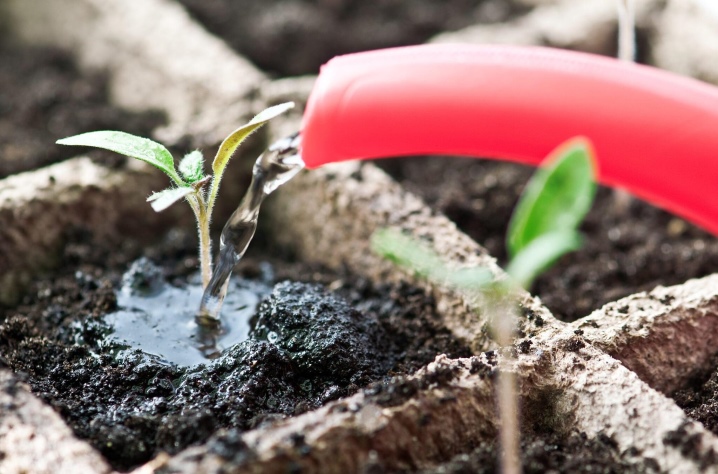
Over time, the seedlings will begin to grow actively, and they will require more and more fertilizers. When 2 leaves are formed on the peppers, it is better to feed them with Azophos or Nitroammophos. You can also use organic fertilizers, the concentration of which was discussed above. Chicken droppings, mullein, ash will do. Top dressing should be 2: Immediately after the opening of the second leaf and 2 weeks after the first.
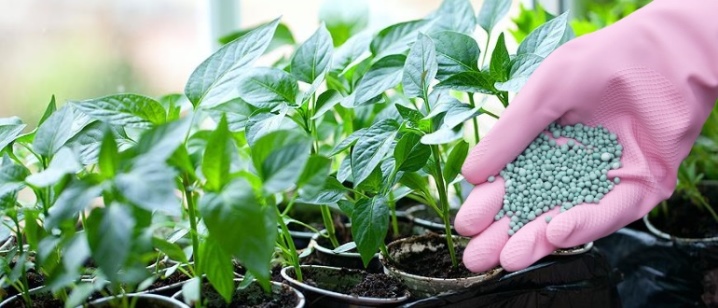
In the open field
The peppers continue to be fed after planting in open ground. As a rule, this is the very beginning of June. Young seedlings will need a lot of nitrogen, so the soil will need to be treated with organic fertilizers, fermented herbs, ammonium nitrate... You should choose one option. In addition, you can use purchased fertilizers, for example, "GUMI". Further, seedlings in the open field will have to be fed every 2 weeks before flowering.
In July, the pepper blooms, and care must be taken to ensure that a sufficient number of ovaries are formed on the plants. Boron is perfect for this.... Top dressing will be foliar, the plants are simply sprayed. To prepare a solution, 6 g of boric acid is dissolved in a bucket of water (10 l). You can also use other products containing boron. They must be bred according to the instructions. In addition to boron, potassium and calcium are added.
During fruiting, peppers really need potassium.... To fertilize the crop, you can take potassium monophosphate (20 g per 10 l of water). An infusion of wood ash is also good. A glass of the substance must be diluted in a 10-liter bucket of water and insisted for 10 days. But keep in mind that such an infusion increases the amount of alkali in the soil.
Also, the peppers will need to be fed once with a mullein at the time of fruiting (1: 20).
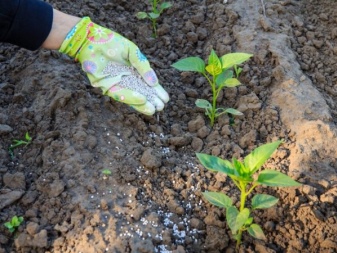
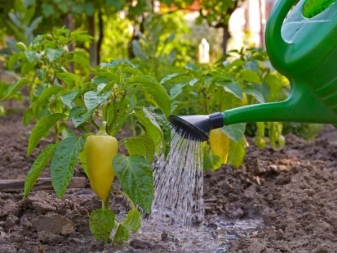
In the greenhouse
Growing peppers in a greenhouse is not much different from growing outdoors. Top dressing will be the same, but there are several important nuances.
- Before planting, a soil mixture is prepared from 3 parts of greenhouse land, 1 part of ash and the same amount of humus. The mixture is added to the wells.
- To feed the peppers in the greenhouse with nitrogen and phosphorus, take 2 tablespoons of 1% nitrate solution, as well as superphosphate, dissolve in a bucket of water. With this mixture, the culture is fertilized at every third watering.
- 14 days before harvesting the fruits, root feeding with mineral complexes is completely stopped.
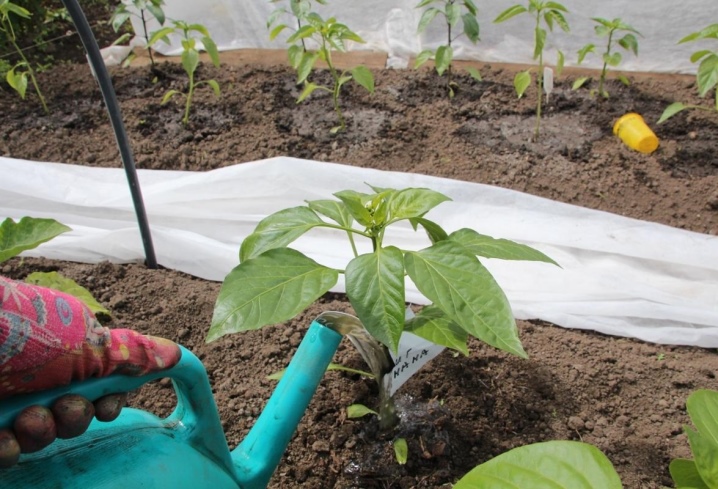
Useful Tips
Here are some tips for growing and feeding bell peppers.
- Do not apply too much fertilizer... If the land is very fertile, they may not be needed at all.
- Try to dose nitrogen, since its excess will cause a small number of fruits.
- Fertilizers should be diluted in warm and previously settled water.... In addition, before feeding the ground, it is worth watering, and after feeding it, loosen it up.
- Good decision - alternate mineral complexes and folk remedies.
- It is necessary to process the culture so that the compounds do not fall on the leaves.... At high concentrations, you can burn the foliage.
How and how to feed bell peppers, see the video.













The comment was sent successfully.